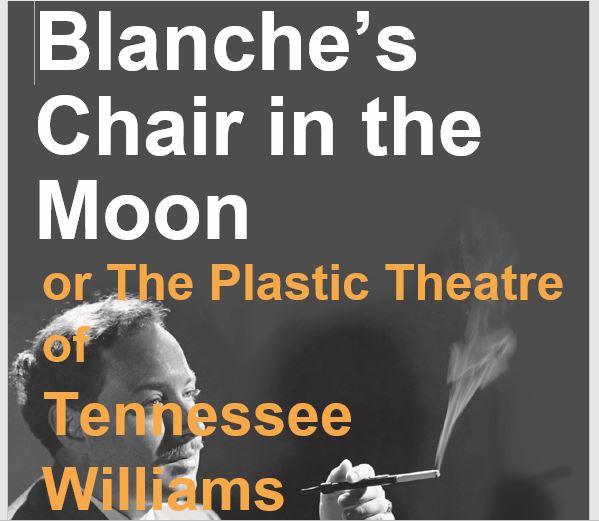Blanche's Chair in the Moon:
Expressionism and all other unconventional techniques” that serve only to get closer to the truth. And though Streetcar can seem to fall under the banner of a realistic play—complete with its own ice box cubes—the play is part of the playwright’s Plastic Theatre revolution.
Williams constantly stitched together personal experiences and existing materials when crafting his plays. In Streetcar as in Menagerie, Williams borrows from his biography in the form of his mentally ill sister Rose, from the sights and sounds of his 1947 New Orleans home, and from his personal anxieties about being a gay man. Williams directly transfers language from scraps of his other plays like The Spinning Song and Portrait of a Madonna and puts it in Blanche’s mouth. He steals from the bold colours of Van Gogh’s painting The Night Café and the poetry of Edgar Allen Poe and Elizabeth Barrett Browning. These elements create a collage of discrete parts that unite to get closer to the truth of decay, desire, and loss. Williams’s almost curatorial style of playwriting blurs the lines of a straightforward realistic play. It is a mixture of painting, dance, music, poetry, and memory with a play at its centre.
Williams considered several titles for his play before he settled on A Streetcar Named Desire: The Poker Night, The Moth, The Primary Colors, and Blanche’s Chair in the Moon. These working titles evoke bold colors, images, and symbols. Surely a play called Blanche’s Chair in the Moon could not be contained in a set with three real walls and an actual ceiling.
Streetcar is in many ways a memory play just like Glass Menagerie, but where Amanda dominates Tom’s memory, Blanche is the star of her own story. It is in this theatrical space of memory, playing on a constant loop in Blanche’s mind, where Williams departs from the established conventions of his artistic moment. In keeping with mid20th-century American realism, Streetcar calls for practical lamps onstage and characters who seem familiar to its audiences, but the play also calls for passing shadows, animal imagery, and haunting music that only Blanche can hear, and a specific use of color in the costumes and lighting that symbolize emotion, character types, and even the concepts of life, death, and salvation.
In Glass Menagerie, Tom (a stand-in for the playwright himself, even possessed of Williams’s given birth name) enters the stage and addresses the audience, saying, “Yes, I have tricks in my pocket, I have things up my sleeve. But I am the opposite of a stage magician. He gives you illusion that has the appearance of truth. I give you truth in the pleasant disguise of illusion.” Blending realism with his concept of a new, plastic theatre, Williams manipulates the theatrical tricks at his disposal in Streetcar and illuminates a truth about sexuality, society, and family that resonates decades after Blanche breathlessly exclaims, “sometimes—there’s God—so quickly!”


Comments
Post a Comment